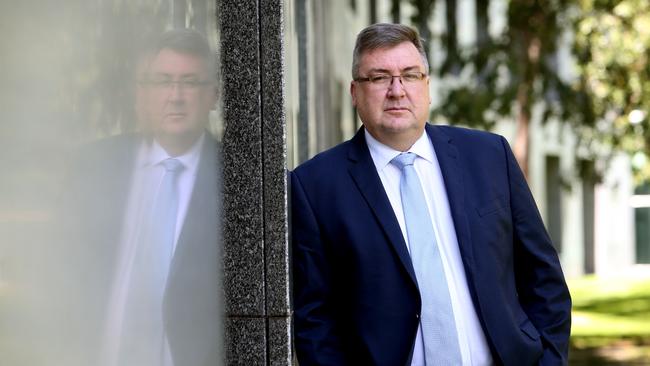TAFEs need funds to help young people stay off dole queues

Much has changed in the intervening period, but the hope of parents for better times for their children has not.
Australian governments can be justifiably proud of the response to the global pandemic, especially in comparison to our traditional allies. But a reduction in the flow of migrants and temporary visitors to minimise its spread back into Australia presents a challenge we need to address.
For too long the housing and consumption demand from new arrivals who seek a better life here has propped up Australia’s sustained economic miracle. The trade-off for regular workers has been lower economic growth per capita and stagnant wages.
READ MORE: Unis: turmoil at the top | Review heralds tertiary shake-up | Real-world work for undergrads | Covid spike in uni applications |Post-pandemic strategy for skills |
Ramping up new forms of productivity from the economy to counter a stalled population will be a new priority, otherwise young people carry the risk. The Youth Unemployment Monitor released this month by the Brotherhood of St Laurence calls it out.
In June unemployment among people aged 15 to 24 reached a 23-year high of 16.4 per cent and dropped marginally to 15.6 per cent by October. The recovery has been largely in part-time insecure jobs, exacerbating underemployment which surpassed unemployment at 17.9 per cent in April.
Against this bleak backdrop, conventional wisdom is to increase investment in education and training as a counter cyclical measure. It prepares young people for future jobs when the recovery comes, but importantly in the normative spirit of good education, it triggers innovation and new enterprise.
The education response in 2020 tells a different story. More university places are being squeezed out of the same level of higher education funding, meaning students will pay more or be served up compromised learning.
Vocational education is usually the swing sector with the model and capability to ramp up effort. The Morrison government’s only investment in vocational education is $500 million. It barely compensates for real declines in its funding and will be needed to prop-up the off-the-job training for the new apprentices and trainees brought on by employers who receive $1.2 billion in wage subsidies.
The rate of funding is the major concern. The lowest rate of funding flowing to universities for a student is $15,600 per year. For VET, the matching $500 million from states and territories to form the $1 billion JobTrainer is a needed injection, but, across an additional 340,000 training places, translates to just under $3,000 per student. It makes VET a hard sell.
It also strains logic to think that a small dose of training that imparts competencies from a by-gone era will set someone up for the future.
COVID disruption amplifies learning disadvantage, and risks Australia slipping further behind its competitor nations as recent OECD skill measures have shown. Research conducted by the federal education department to encourage states to return students to school shows students in disadvantaged circumstances risk being left further behind. VET is hardly geared to offer a solution. At best, in too many instances it directs students to insecure work and fails to address underpinning learning needs of students. Too many VET qualifications are like giving a starving man a hamburger, thinking he is sustained for life.
The vocational education model needs to flip. It needs an expansive vision where it instils agency in students to navigate for a fulfilling career on their terms – not one set solely by industry determination, but one that develops adaptive workers who can steer new enterprise and innovation.
Many sites of work across Australia transformed their operating models by taking up technology in new ways to continue operating. If this is the new approach for work then it needs to be the core of teaching and learning for vocational education. TAFE responses to COVID shutdowns show they are geared for the change.
Our migration story is a miracle. The children of those families landing in Melbourne are now the professionals, managers, business owners and allied health workers which sustain our economy. One of those children is the CEO of a TAFE in Melbourne.
As the Brotherhood reminds us, high youth unemployment persists for years after a recession and deals out long-term scars.
In a new era where the role of government has expanded and is being celebrated, the question is whether parents and their children can see a renewed opportunity being laid out before them through transformed education and training.
Craig Robertson is chief executive officer of TAFE Directors Australia.



Many migrant families disembarking in Melbourne in the 1960s and 70s were greeted with work opportunities in the automotive sector. The family car was in easy reach and with Australians discovering the wide-open roads, demand for car assembly workers was high. Families fleeing depressed Europe struggling to recover from the war embarked on a new land, with opportunity and hope for themselves and their children.